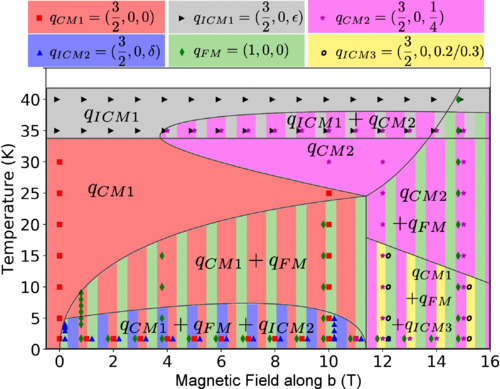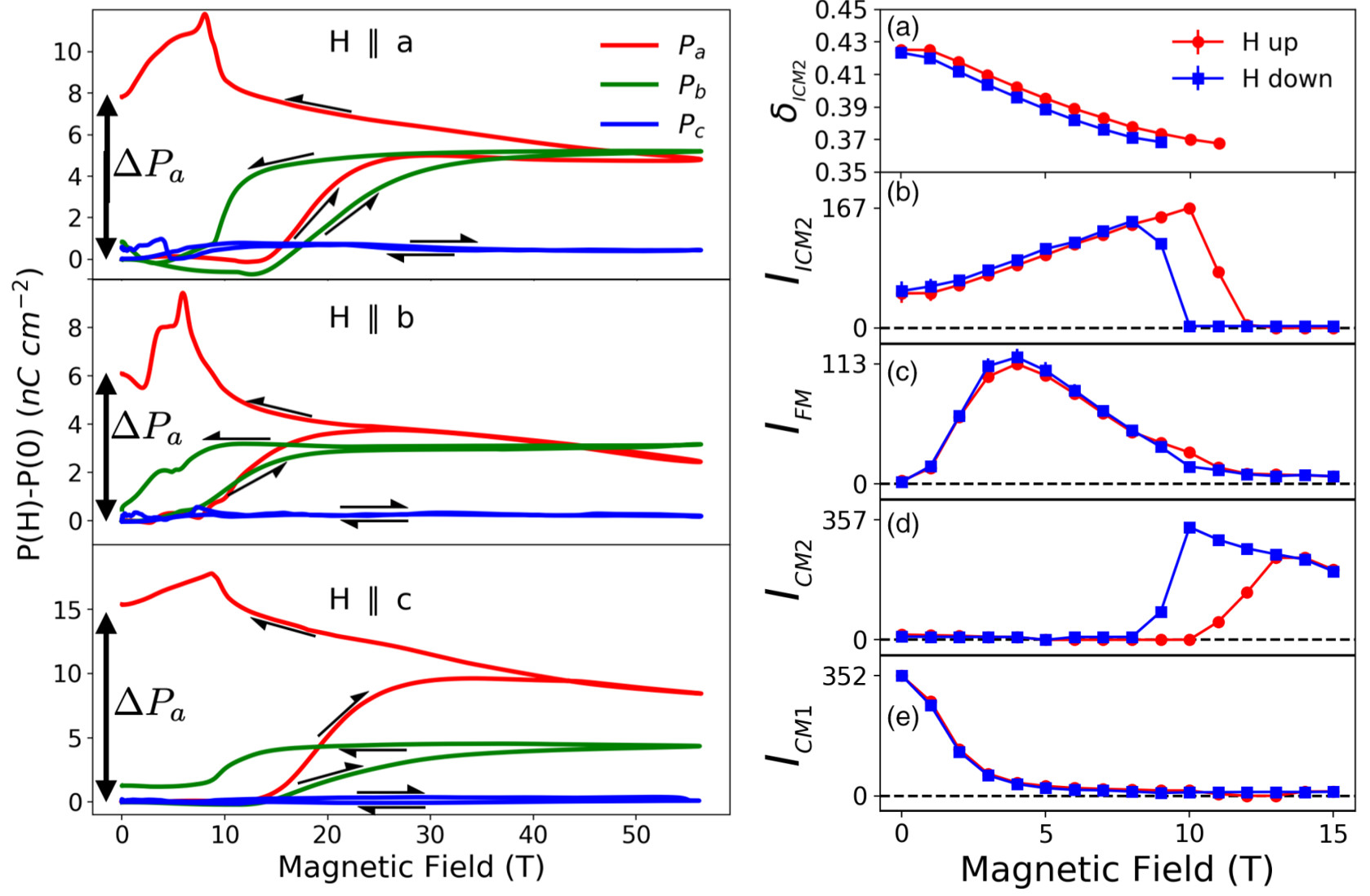
| Multiferroic compounds are widely studied for their magnetoelectric coupling, enabling polarization, for example, to be manipulated using a magnetic field. A new electronic state has just been discovered in the multiferroic compound GdMn2O5 after applying a magnetic field and then switching it off. This state is characterized by a strongly enhanced electrical polarization, but a reversible magnetic order. |
Multiferroic compounds have been extensively investigated due to their simultaneous manifestation of ferroelectricity and magnetic order. In certain compounds like the RMn2O5 family, the coupling is sufficiently robust to manipulate ferroelectric properties through the application of a magnetic field. The potential applications of such compounds are diverse, ranging from information storage with 4-state memories to the energy optimization of data writing. A notable illustration of this coupling is evident in the GdMn2O5 compound, where the electrical polarization undergoes reversal under the influence of a static magnetic field measuring 2 Tesla.
In collaboration with teams from LLB (Paris-Saclay, France), ILL (Grenoble, France) and EMFL (Dresden, Germany), researchers from the Laboratoire de Physique des Solides have highlighted a new manifestation of magneto-electric coupling in the multiferroic compound GdMn2O5. Our recent experimental results, combining measurements of electrical polarization and inelastic neutron scattering under a magnetic field, have unveiled a hitherto undiscovered phenomenon. In this compound, a transition occurs around 11 Tesla, leading to a modification in magnetic order that reverts to its original state when the magnetic field is reduced to zero. However, polarization measurements indicate that the electronic state does not revert to its initial state after this field cycling; the electrical polarization remains higher than its pre-increase level. The observation of persistent electric polarization following a magnetic field sweep is intriguing. This not only allows access to new ground states, but also introduces the notion of path-dependent ground state.

Right : Evolution as a function of the magnetic field along the b axis and T=2K of the magnetic peaks measured by neutron scattering : (a) and (b) position and intensity of the incommensurate phase, (c) intensity of the ferromagnetic component, (d) the intensity of another field induced incommensurate phase and (e) the intensity of the commensurate low field phase.
Contributors
Team Matter and Radiation (MATRIX)
References
Electronic ground-state hysteresis under magnetic field in GdMn2O5 V. Balédent, A. Vaunat, S. Petit, L. Nataf, S. Chattopadhyay, S. Raymond, and P. Foury-Leylekian Physical Review B 108, 104419 (2023)
